Surveillance has become a growing feature of daily life wielded by both the state and the larger corporate sphere. This merger registers both the transformation of the political state into the corporate state as well as the transformation of a market economy into a criminal economy. One growing attribute of the merging of state and corporate surveillance apparatuses is the increasing view of privacy on the part of the American public as something to escape from rather than preserve as a precious political right. The surveillance and security-corporate state is one that not only listens, watches, and gathers massive amounts of information through data mining necessary for monitoring the American public—now considered as both potential terrorists and a vast consumer market- but also acculturates the public into accepting the intrusion of surveillance technologies and privatized commodified values into all aspects of their lives. Personal information is willingly given over to social media and other corporate based websites such as Instagram, Facebook, MySpace, and other media platforms and harvested daily as people move from one targeted website to the next across multiple screens and digital apparatuses. As Ariel Dorfman points out, “social media users gladly give up their liberty and privacy, invariably for the most benevolent of platitudes and reasons,” all the while endlessly shopping online and texting.[1] While selfies may not lend themselves directly to giving up important private information online, they do speak to the necessity to make the self into an object of public concern, if not a manifestation of how an infatuation with selfie culture now replaces any notion of the social as the only form of agency available to many people. Under such circumstances, it becomes much easier to put privacy rights at risk as they are viewed less as something to protect than to escape from in order to put the self on public display.
When the issue of surveillance takes place outside of the illegal practices performed by government intelligence agencies, critics most often point to the growing culture of inspection and monitoring that occurs in a variety of public spheres through ever present digital technologies used in the collecting of a mass of diverse information, most evident in the use video cameras that inhabit every public space from the streets, commercial establishments, and workplaces to the schools our children attend as well as in the myriad scanners placed at the entry points of airports, stores, sporting events, and the like. Rarely do critics point to the emergence of the selfie as another index of the public’s need to escape from the domain of what was once considered to be the cherished and protected realm of the private and personal. Privacy rights in this instance that were once viewed as a crucial safeguard in preventing personal and important information from being inserted into the larger public domain. In the present oversaturated information age, the right to privacy has gone the way of an historical relic and for too many Americans privacy is no longer a freedom to be cherished and by necessity to be protected. In fact, young people, in particular, cannot escape from the realm of the private fast enough. The rise of the selfie offers one index of this retreat from privacy rights and thus another form of legitimation for devaluing these once guarded rights altogether. One place to begin is with the increasing presence of the selfie, that is, the ubiquity of self-portraits being endlessly posted on various social media. One recent commentary on the selfie reports that:
A search on photo sharing app Instagram retrieves over 23 million photos uploaded with the hashtag #selfie, and a whopping 51 million with the hashtag #me. Rihanna, Justin Bieber, Lady Gaga and Madonna are all serial uploaders of selfies. Model Kelly Brook took so many she ended up “banning” herself. The Obama children were spotted posing into their mobile phones at their father’s second inauguration. Even astronaut Steve Robinson took a photo of himself during his repair of the Space Shuttle Discovery. Selfie-ism is everywhere. The word “selfie” has been bandied about so much in the past six months it’s currently being monitored for inclusion in the Oxford Dictionary Online.[2]
What this new politics of digital self-representation suggests is that the most important transgression against privacy may not only be happening through the unwarranted watching, listening, and collecting of information by the state. What is also taking place through the interface of state and corporate modes of the mass collecting of personal information is the practice of normalizing surveillance by upping the pleasure quotient and enticements for young people and older consumers. These groups are now constantly urged to use the new digital technologies and social networks as a mode of entertainment and communication. Yet, they function largely to simulate false notions of community and to socialize young people into a regime of security and commodification in which their identities, values, and desires are inextricably tied to a culture of private addictions, self-help, and consuming.
 The more general critique of selfies points to their affirmation as an out of control form of vanity and narcissism in a society in which an unchecked capitalism promotes forms of rampant self-interests that both legitimize selfishness and corrode individual and moral character.[3] In this view, a market driven moral economy of increased individualism and selfishness has supplanted any larger notion of caring, social responsibility, and the public good. For example, one indication that Foucault’s notion of self-care has now moved into the realm of self-obsession can be seen in the “growing number of people who are waiting in line to see plastic surgeons to enhance images they post of themselves on smartphones and other social media sites. Patricia Reaney points out that “Plastic surgeons in the United States have seen a surge in demand for procedures ranging from eye-lid lifts to rhinoplasty, popularly known as nose job, from patients seeking to improve their image in selfies and on social media.”[4] It appears that selfies are not only an indication of the public’s descent into the narrow orbits of self-obsession and individual posturing but also good for the economy, especially plastic surgeons who generally occupy the one percent of the upper class of rich elites. The unchecked rise of selfishness is now partly driven by the search for new forms of capital, which recognize no boundaries and appear to have no ethical limitations.
The more general critique of selfies points to their affirmation as an out of control form of vanity and narcissism in a society in which an unchecked capitalism promotes forms of rampant self-interests that both legitimize selfishness and corrode individual and moral character.[3] In this view, a market driven moral economy of increased individualism and selfishness has supplanted any larger notion of caring, social responsibility, and the public good. For example, one indication that Foucault’s notion of self-care has now moved into the realm of self-obsession can be seen in the “growing number of people who are waiting in line to see plastic surgeons to enhance images they post of themselves on smartphones and other social media sites. Patricia Reaney points out that “Plastic surgeons in the United States have seen a surge in demand for procedures ranging from eye-lid lifts to rhinoplasty, popularly known as nose job, from patients seeking to improve their image in selfies and on social media.”[4] It appears that selfies are not only an indication of the public’s descent into the narrow orbits of self-obsession and individual posturing but also good for the economy, especially plastic surgeons who generally occupy the one percent of the upper class of rich elites. The unchecked rise of selfishness is now partly driven by the search for new forms of capital, which recognize no boundaries and appear to have no ethical limitations.
In a society in which the personal is the only politics there is, there is more at stake in selfie culture than rampant narcissism or the swindle of fulfillment offered to teenagers and others whose self-obsession and insecurity takes an extreme, if not sometimes dangerous, turn. What is being sacrificed is not just the right to privacy, the willingness to give up the self to commercial interests, but the very notion of individual and political freedom. The atomization that in part promotes the popularity of selfie culture is not only nourished by neoliberal fervor for unbridled individualism, but also by the weakening of public values and the emptying out of collective and engaged politics. The political and corporate surveillance state is not just concerned about promoting the flight from privacy rights but also attempts to use that power to canvass every aspect of one’s life in order to suppress dissent, instill fear in the populace, and repress the possibilities of mass resistance against unchecked power.[5] Selfie culture is also fed by a spiritually empty consumer culture driven by a never-ending “conditions of visibility…in which a state of permanent illumination (and performance) is inseparable from the non-stop operation of global exchange and circulation.”[6] Jonathan Crary’s insistence that entrepreneurial excess now drives a 24/7 culture points rightly to a society driven by a constant state of “producing, consuming, and discarding”—a central feature of selfie culture.[7]
Once again, too many young people today seem to run from privacy by making every aspect of their lives public. Or they limit their presence in the public sphere to posting endless images of themselves. In this instance, community becomes reduced to the sharing of a nonstop production of images in which the self becomes the only source of agency worth validating. At the same time, the popularity of selfies points beyond an over indulgent narcissism, or a desire to collapse the public spheres into endless and shameless representations of the self. Selfies and the culture they produce cannot be entirely collapsed into the logic of domination. Hence, I don’t want to suggest that selfie culture is only a medium for various forms of narcissistic performance. Some commentators have suggested that selfies enable people to reach out to each other, present themselves in positive ways, and use selfies to drive social change. And there are many instances of this type of behavior.
Many young people claim that selfies offer the opportunity to invite comments by friends, raise their self-esteem, and offer a chance for those who are powerless and voiceless to represent themselves in a more favorable and instructive light.[8] For instance, Rachel Simmons makes a valiant attempt to argue that selfies are especially good for girls.[9] While this is partly true, I think Erin Gloria Ryan is right in responding to Simmons claim about selfies as a “positive-self-esteem builder” when she states: “Stop this. Selfies aren’t empowering; they’re a high tech reflection of the fucked up way society teaches women that their most important quality is their physical attractiveness.”[10] It is difficult to believe that mainstream, corporate saturated selfie culture functions to mostly build self-esteem among young girls who are a target for being reduced to salacious sexual commodities and a never-ending market that defines them largely as tidbits of a sensationalized celebrity culture. What is often missing in the marginalized use of selfies is that for the most part the practice is driven by a powerful and pervasive set of poisonous market driven values that frame this practice in ways that are often not talked about. Selfie culture is now a part of a market driven economy that encourages selfies as an act of privatization and consumption not as a practice that might support the public good.
What is missing from this often romanticized and depoliticized view of the popularity of selfies is that the mass acceptance, proliferation, and commercial appropriation of selfies suggests that the growing practice of producing representations that once filled the public space that focussed on important social problems and a sense of social responsibility are in decline among the American public, especially many young people whose identities and sense of agency is now shaped largely through the lens of a highly commodified and celebrity culture. We now live in a market-driven age defined as heroic by the conservative Ayn Rand, who argued in her book, The Virtue of Selfishness, that self-interest was the highest virtue and that altruism deserved nothing more than contempt. This retreat from the public good, compassion, care for the other, and the legitimation of a culture of cruelty and moral indifference is often registered in strange signposts and popularized in the larger culture. For instance, one expression of this new celebrity fed stupidity can be seen less in the endless prattle about the importance of selfies than in the rampant posturing inherent in selfie culture most evident in the widely marketed fanfare over Kim Kardashian’s appropriately named book, Selfish, which contains, of course, hundreds of her selfies. As Mark Fisher points out, this suggests a growing testimony to a commodified society in which “in a world of individualism everyone is trapped within their own feelings, trapped within their own imaginations…and unable to escape the tortured conditions of solipsism.”[11]

Under the surveillance state, the greatest threat one faces is not simply the violation of one’s right to privacy, but the fact that the public is subject to the dictates of arbitrary power it no longer seems interested in contesting. And it is precisely this existence of unchecked power and the wider culture of political indifference that puts at risk the broader principles of liberty and freedom, which are fundamental to democracy itself. According to Skinner:
The response of those who are worried about surveillance has so far been too much couched, it seems to me, in terms of the violation of the right to privacy. Of course it’s true that my privacy has been violated if someone is reading my emails without my knowledge. But my point is that my liberty is also being violated, and not merely by the fact that someone is reading my emails but also by the fact that someone has the power to do so should they choose. We have to insist that this in itself takes away liberty because it leaves us at the mercy of arbitrary power. It’s no use those who have possession of this power promising that they won’t necessarily use it, or will use it only for the common good. What is offensive to liberty is the very existence of such arbitrary power.[12]
The rise of selfies under the surveillance state is only one register of neoliberal inspired flight from privacy. As I have argued elsewhere, the dangers of the surveillance state far exceed the attack on privacy or warrant simply a discussion about balancing security against civil liberties.[13] The critique of the flight from privacy fails to address how the growth of the surveillance state and its appropriation of all spheres of private life are connected to the rise of the punishing state, the militarization of American society, secret prisons, state-sanctioned torture, a growing culture of violence, the criminalization of social problems, the depoliticization of public memory, and one of the largest prison systems in the world, all of which “are only the most concrete, condensed manifestations of a diffuse security regime in which we are all interned and enlisted.”[14] The authoritarian nature of the corporate-state surveillance apparatus and security system with its “urge to surveill, eavesdrop on, spy on, monitor, record, and save every communication of any sort on the planet” [15] can only be fully understood when its ubiquitous tentacles are connected to wider cultures of control and punishment, including security-patrolled corridors of public schools, the rise in super-max prisons, the hyper-militarization of local police forces, the rise of the military-industrial-academic complex, and the increasing labeling of dissent as an act of terrorism in the U.S.[16] Selfies may be more than an expression of narcissism gone wild, the promotion of privatization over preserving public and civic culture with their attendant practice of social responsibility. They may also represent the degree to which the ideological and affective spaces of neoliberalism have turned privacy into a mimicry of celebrity culture that both abets and is indifferent to the growing surveillance state and its totalitarian revolution, one that will definitely be televised in an endlessly repeating selfie that owes homage to George Orwell.
Henry A. Giroux currently holds the McMaster University Chair for Scholarship in the Public Interest in the English and Cultural Studies Department and a Distinguished Visiting Professorship at Ryerson University. His most recent books are America’s Education Deficit and the War on Youth (Monthly Review Press, 2013) and Neoliberalism’s War on Higher Education (Haymarket Press, 2014). His web site is www.henryagiroux.com.
Notes.
[1] Ariel Dorfman, “Repression by Any Other Name,” Guernica (February 3, 2014). Online: http://www.guernicamag.com/features/repression-by-any-other-name/
[2] “Self-portraits and social media: The rise of the ‘Selfie’,” BBC News Magazine(June 6, 2013)
http://www.bbc.com/news/magazine-22511650
[3] Anita Biressi and Heather Nunn, “Selfishness in austerity times,” Soundings , Issue 56, (Spring 2014), pp. 54-66
http://muse.jhu.edu/journals/soundings_a_journal_of_politics_and_culture/v056/56.biressi.pdf
[4] Patricia Reaney, “Nip, tuck, Click: Demand for U.S. plastic surgery rises in selfie era,” Reuters (November 29, 2014). Online: http://www.reuters.com/article/2014/11/29/life-selfies-surgery-idUSL1N0SW1FI20141129
[5] Brad Evans and Henry A. Giroux, Disposable Futures (San Francisco: City Lights Books, 2015).
[6] Jonathan Crary, 24/7: Late Capitalism and the Ends of Sleep, (Verso, 2013) (Brooklyn, NY: Verso Press, 2013), p. 5.
[7] Ibid., p. 17.
[8] The kind of babble defending selfies without any critical commentary can be found in Jenna Wortham, “Self-portraits and social media: The rise of the ‘selfie’,”BBC News Magazine (June 6, 2013). Online:
Http://www.nytimes.com/2013/10/20/sunday-review/my-selfie-myself.html
[9] Rachel Simmons, “Selfies Are Good for Girls,” Slate (November 20, 2013). Online: http://www.slate.com/articles/double_x/doublex/2013/11/selfies_on_instagram_and_facebook_are_tiny_bursts_of_girl_pride.html
[10] Erin Gloria Ryan, “Selfies Aren’t Empowering. They’re a Cry for Help,” Jezebel (November 21, 2013). Online: http://jezebel.com/selfies-arent-empowering-theyre-a-cry-for-help-1468965365
[11] Mark Fisher, Capitalist Realism: Is There No Alternative? (Winchester, UK: Zero Books, 2009), p. 74.
[12] Quentin Skinner and Richard Marshall “Liberty, Liberalism and Surveillance: a historic overview” Open Democracy (July 26, 2013). Online: http://www.opendemocracy.net/ourkingdom/quentin-skinner-richard-marshall/liberty-liberalism-and-surveillance-historic-overview
[13] Henry A. Giroux, “Totalitarian Paranoia in the Post-Orwellian Surveillance State,” Truthout (February 10, 2015). Online: http://truth-out.org/opinion/item/21656-totalitarian-paranoia-in-the-post-orwellian-surveillance-state
[14] Michael Hardt and Antonio Negri, Declaration (Argo Navis Author Services, 2012), p. 23.
[15] Tom Engelhardt, “Tomgram: Engelhardt, A Surveillance State Scorecard,” Tom Dispath.com (November 12, 2013). Online: http://www.tomdispatch.com/blog/175771/
[16] I take up many of these issues in Henry A. Giroux, The Violence of Organized Forgetting (San Francisco: City Lights Publishing, 2014), Henry A. Giroux, The Twilight of the Social (Boulder: Paradigm Press, 2012), and Henry A. Giroux, Zombie Politics and Culture in the Age of Casino Capitalism (New York: Peter Lang, 2011).






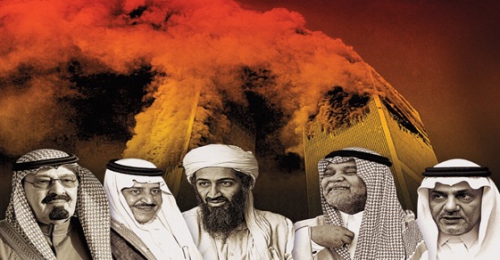

 del.icio.us
del.icio.us
 Digg
Digg
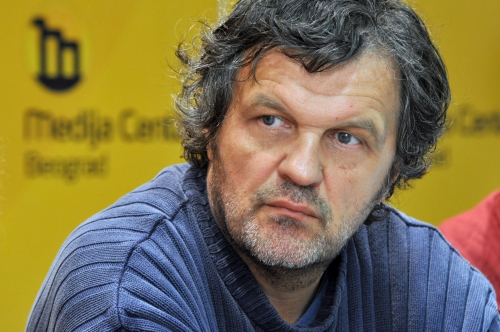
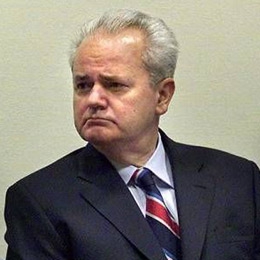 E. K. Cela a été le point de départ. En 1992, les divers acteurs ont mis en avant certains aspects pour créer une atmosphère favorisant un conflit. Ils ont ensuite légalisé une intervention au nom de l’aide humanitaire. Toute possibilité de paix a été écartée et la Yougoslavie a été démembrée à leur guise, laissant Slobodan Milosevic pour seul responsable. Le Kosovo est un bel exemple de leur mensonge et de leur justice aléatoire. Ils ont soutenu la séparation de cette région au nom du droit des peuples mais la refusent à la Crimée ! Les États-Unis et le camp atlantiste imposent leur vérité car ils se comportent en vainqueurs de la guerre froide. Ils estiment avoir triomphé du marxisme et tué le communisme.
E. K. Cela a été le point de départ. En 1992, les divers acteurs ont mis en avant certains aspects pour créer une atmosphère favorisant un conflit. Ils ont ensuite légalisé une intervention au nom de l’aide humanitaire. Toute possibilité de paix a été écartée et la Yougoslavie a été démembrée à leur guise, laissant Slobodan Milosevic pour seul responsable. Le Kosovo est un bel exemple de leur mensonge et de leur justice aléatoire. Ils ont soutenu la séparation de cette région au nom du droit des peuples mais la refusent à la Crimée ! Les États-Unis et le camp atlantiste imposent leur vérité car ils se comportent en vainqueurs de la guerre froide. Ils estiment avoir triomphé du marxisme et tué le communisme.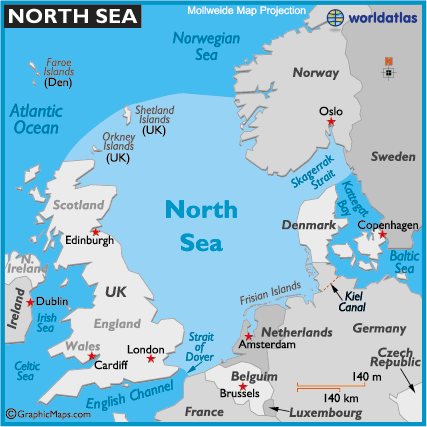
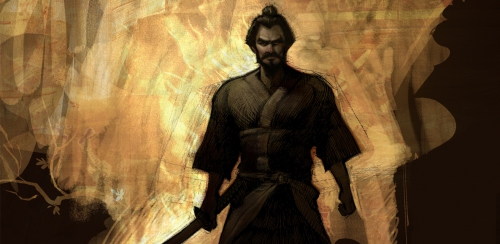
 Sa postérité est telle que ce que nous connaissons réellement de sa vie fraye avec le romanesque et le légendaire, et bien sûr ce personnage atypique a ses adulateurs et détracteurs chez les amoureux de la culture japonaise et des arts martiaux. Ce qui est certain, à la lecture des Écrits sur les Cinq Éléments, c'est que Musashi était un esprit libre en phase avec la vie. Ces cinq rouleaux rédigés à l'extrême fin de sa vie étaient destinés à transmettre l'essence de son art à ses élèves.
Sa postérité est telle que ce que nous connaissons réellement de sa vie fraye avec le romanesque et le légendaire, et bien sûr ce personnage atypique a ses adulateurs et détracteurs chez les amoureux de la culture japonaise et des arts martiaux. Ce qui est certain, à la lecture des Écrits sur les Cinq Éléments, c'est que Musashi était un esprit libre en phase avec la vie. Ces cinq rouleaux rédigés à l'extrême fin de sa vie étaient destinés à transmettre l'essence de son art à ses élèves.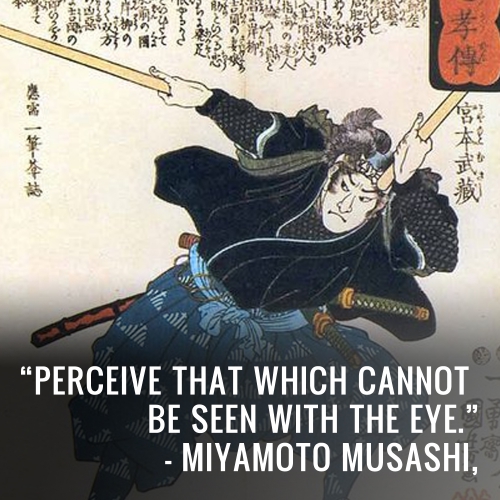
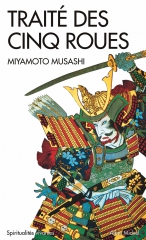 Miyamoto Mikinosuke deviendra un vassal de la seigneurie de Himeji (1622), mais le jeune homme suivra son seigneur dans la mort en pratiquant le suicide rituel (1626). Miyamoto Iori, qui serait peut-être un sien neveu, entrera au service du seigneur Ogasawara (1626). Surtout, en 1624, il séjourne à Edo, la capitale, et noue d’étroites relations avec Hayashi Razan, un célèbre savant confucéen, ce dernier proche du Shôgun l’aurait proposé comme maître de sabre, mais le Shôgun disposant déjà de deux maîtres d’armes de renom, Yagyû Munenori (école shinkage ryû) et
Miyamoto Mikinosuke deviendra un vassal de la seigneurie de Himeji (1622), mais le jeune homme suivra son seigneur dans la mort en pratiquant le suicide rituel (1626). Miyamoto Iori, qui serait peut-être un sien neveu, entrera au service du seigneur Ogasawara (1626). Surtout, en 1624, il séjourne à Edo, la capitale, et noue d’étroites relations avec Hayashi Razan, un célèbre savant confucéen, ce dernier proche du Shôgun l’aurait proposé comme maître de sabre, mais le Shôgun disposant déjà de deux maîtres d’armes de renom, Yagyû Munenori (école shinkage ryû) et  Le jitte est une arme de neutralisation, sa lame est non-tranchante et effilée avec une griffe latérale au niveau de la garde. Le jitte était une arme d’appoint complétant le sabre. Toutefois, selon d’autres sources le jitte manipulé par Musashi aurait été un modèle à dix griffes. Le jitte et le sabre court (wakizashi) servaient à immobiliser ou à parer la lame de l’adversaire offrant une ouverture pour une frappe au sabre long (katana). Toutefois, pour Musashi, l’emploi des deux sabres est circonstancielle comme l’affirme les Écrits sur les Cinq Éléments, mais cette technique fait l’originalité de son école. C’était peut-être, outre les aspects techniques, un moyen de se différencier et de « séduire » un seigneur en quête d’instructeur. L’école de Musashi, la
Le jitte est une arme de neutralisation, sa lame est non-tranchante et effilée avec une griffe latérale au niveau de la garde. Le jitte était une arme d’appoint complétant le sabre. Toutefois, selon d’autres sources le jitte manipulé par Musashi aurait été un modèle à dix griffes. Le jitte et le sabre court (wakizashi) servaient à immobiliser ou à parer la lame de l’adversaire offrant une ouverture pour une frappe au sabre long (katana). Toutefois, pour Musashi, l’emploi des deux sabres est circonstancielle comme l’affirme les Écrits sur les Cinq Éléments, mais cette technique fait l’originalité de son école. C’était peut-être, outre les aspects techniques, un moyen de se différencier et de « séduire » un seigneur en quête d’instructeur. L’école de Musashi, la Ce qui reste de Musashi : l’empreinte spirituelle d’un homme, qui n’était probablement pas le meilleur artiste martial du Japon (la vie se réduit-elle aux arts martiaux ? Musashi était par ailleurs artiste et philosophe), mais d’un homme libre (ou pour le moins qui a pu se construire une marge d’autonomie plus importante que la moyenne au regard de sa situation sociale) qui se contentait d’être pleinement, de transmettre et de construire. Ayant atteint la maturité spirituelle et technique, Miyamoto Musashi vainquait sans tuer. Les Écrits sur les Cinq Éléments respirent la vie, c’est un modèle de pensée aux antipodes du caractère morbide et étriqué du hagakure de Yamamoto Tsunetomo. Le livre de Musashi est important car, il révèle les techniques gardées généralement secrètes par les autres écoles, à savoir les techniques corporelles (respiration, distance, postures, etc.). Pour une lecture approfondie, il est vivement recommandé de lire la traduction des Écrits sur les Cinq Éléments et la biographie de Miyamoto Musashi par
Ce qui reste de Musashi : l’empreinte spirituelle d’un homme, qui n’était probablement pas le meilleur artiste martial du Japon (la vie se réduit-elle aux arts martiaux ? Musashi était par ailleurs artiste et philosophe), mais d’un homme libre (ou pour le moins qui a pu se construire une marge d’autonomie plus importante que la moyenne au regard de sa situation sociale) qui se contentait d’être pleinement, de transmettre et de construire. Ayant atteint la maturité spirituelle et technique, Miyamoto Musashi vainquait sans tuer. Les Écrits sur les Cinq Éléments respirent la vie, c’est un modèle de pensée aux antipodes du caractère morbide et étriqué du hagakure de Yamamoto Tsunetomo. Le livre de Musashi est important car, il révèle les techniques gardées généralement secrètes par les autres écoles, à savoir les techniques corporelles (respiration, distance, postures, etc.). Pour une lecture approfondie, il est vivement recommandé de lire la traduction des Écrits sur les Cinq Éléments et la biographie de Miyamoto Musashi par 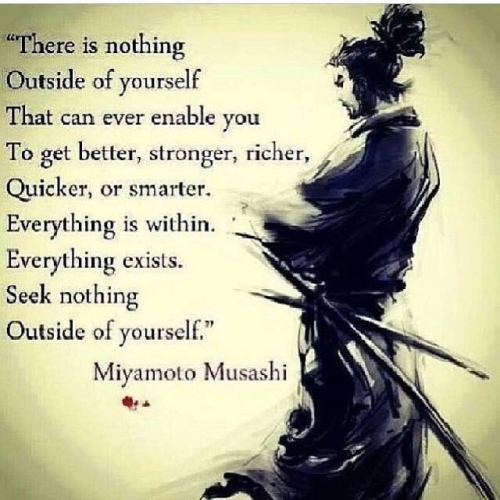
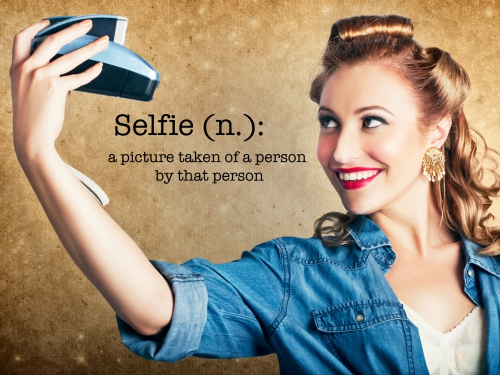
 The more general critique of selfies points to their affirmation as an out of control form of vanity and narcissism in a society in which an unchecked capitalism promotes forms of rampant self-interests that both legitimize selfishness and corrode individual and moral character.
The more general critique of selfies points to their affirmation as an out of control form of vanity and narcissism in a society in which an unchecked capitalism promotes forms of rampant self-interests that both legitimize selfishness and corrode individual and moral character.